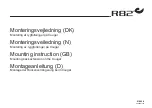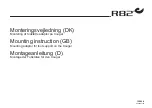
12
7. SAFETY
ROAD SURFACES
1. The power wheelchair is designed optimally for level surfaces; such as concrete, asphalt
and indoor ground flooring.
2. Do not use the wheelchair on sand, loose soil or uneven surfaces to prevent damage to
wheels, bearings, shafts and motors, as well as possible loosening of fasteners.
• Ensure that all electrical connections are safe and non-loose.
• You must not wash the wheelchair with water. If the electric wheelchair is wet, please
remove the battery as soon as possible and make the wheelchair dry. Make sure the
wheelchair is dry before loading the battery to use it.
2. When operating on wet or frictionless ground surfaces, please carefully move at a slow
speed.
• You must make sure that it is safe to do so.
• If one or two of the main wheels lose traction, you must stop immediately to prevent
the electric wheelchair from getting out of control or falling down.
• Do not drive into slopes or ramps covered with snow, ice, water, oil, etc.
3. Please ensure the power is off when finish using, make the batteries full-charged and keep
the wheelchair clean and dry.
DRIVE IN TRAFFIC ENVIRONMENT
You must be aware of that it is dangerous to drive on public roads or parking lots.
1. For increased visibility at night, the wheelchair
has light reflecting markers (Fig. B1).
2. Users can also wear reflective clothing.
3. When operating the wheelchair in traffic
amongst motor vehicles, make sure the driver
notices you. Before you continue to operate the
wheelchair, make eye contact with the driver
(Fig. B1)
and make gestures to show your intentions until you are sure it is safe to drive.
Please beware of the local traffic regulations on public roads.
Summary of Contents for AE001
Page 1: ...User Manual PRODUCT CODE AE001...
Page 34: ...34 NOTES...
Page 35: ...35 NOTES...
Page 36: ...36...













































